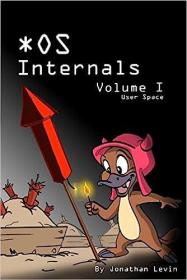
现货 Stochastic Control Theory:Dynamic Programming Principle (Probability Theory and Stochastic Modelling, 72)
进口原版图书
¥ 776 全新
仅1件
作者Makiko Nisio(Author)
出版社Springer
ISBN9784431564089
出版时间2016-08
装帧平装
页数265页
货号9784431564089
上书时间2024-09-11
- 在售商品 暂无
- 平均发货时间 34小时
- 好评率 暂无
- 店主推荐
- 最新上架
商品详情
- 品相描述:全新
- 商品描述
- This book offers a systematic introduction to the optimal stochastic control theory via the dynamic programming principle, which is a powerful tool to analyze control problems.First we consider completely observable control problems with finite horizons. Using a time discretization we construct a nonlinear semigroup related to the dynamic programming principle (DPP), whose generator provides the Hamilton–Jacobi–Bellman (HJB) equation, and we characterize the value function via the nonlinear semigroup, besides the viscosity solution theory. When we control not only the dynamics of a system but also the terminal time of its evolution, control-stopping problems arise. This problem is treated in the same frameworks, via the nonlinear semigroup. Its results are applicable to the American option price problem.Zero-sum two-player time-homogeneous stochastic differential games and viscosity solutions of the Isaacs equations arising from such games are studied via a nonlinear semigroup related to DPP (the min-max principle, to be precise). Using semi-discretization arguments, we construct the nonlinear semigroups whose generators provide lower and upper Isaacs equations.Concerning partially observable control problems, we refer to stochastic parabolic equations driven by colored Wiener noises, in particular, the Zakai equation. The existence and uniqueness of solutions and regularities as well as It?'s formula are stated. A control problem for the Zakai equations has a nonlinear semigroup whose generator provides the HJB equation on a Banach space. The value function turns out to be a unique viscosity solution for the HJB equation under mild conditions.This edition provides a more generalized treatment of the topic than does the earlier book Lectures on Stochastic Control Theory (ISI Lecture Notes 9), where time-homogeneous cases are dealt with. Here, for finite time-horizon control problems, DPP was formulated as aone-parameter nonlinear semigroup, whose generator provides the HJB equation, by using a time-discretization method. The semigroup corresponds to the value function and is characterized as the envelope of Markovian transition semigroups of responses for constant control processes. Besides finite time-horizon controls, the book discusses control-stopping problems in the same frameworks. Read more
相关推荐
-

现货 Introduction to Stochastic Processes
九品北京
¥ 450.00
-

现货 英文版 Stochastic Processes
九品北京
¥ 600.00
-
![现货Introduction to Stochastic Processes[9781584886518]](https://www0.kfzimg.com/sw/kfz-cos/kfzimg/17733071/b0b4eb331221048e_s.jpg)
现货Introduction to Stochastic Processes[9781584886518]
九五品上海
¥ 1008.00
-
![现货 Stochastic Dynamics of Structures[9781848219496]](https://www0.kfzimg.com/sw/kfz-cos/kfzimg/17733071/04f99148efd1da22_s.jpg)
现货 Stochastic Dynamics of Structures[9781848219496]
九五品上海
¥ 1624.00
-

INTRODUCTION TO STOCHASTIC PROCESSES精装现货
九品上海
¥ 288.00
-

现货 Convex and Stochastic Optimization (Universitext)
全新上海
¥ 681.00
-

原版现货 Stochastic Partial Differential Equations
九品西安
¥ 105.00
-
![现货Stochastic Geometric Analysis with Applications[9789811283277]](https://www0.kfzimg.com/sw/kfz-cos/kfzimg/17733071/27d5489f9c598ea8_s.jpg)
现货Stochastic Geometric Analysis with Applications[9789811283277]
九五品上海
¥ 1100.00
-
![现货Stochastic Models of Financial Mathematics[9781785481987]](https://www0.kfzimg.com/sw/kfz-cos/kfzimg/17733071/af88468f1a4990c3_s.jpg)
现货Stochastic Models of Financial Mathematics[9781785481987]
九五品上海
¥ 1095.00
-

现货 Introduction to Stochastic Calculus with Applications
九五品上海
¥ 491.00
— 没有更多了 —





















以下为对购买帮助不大的评价